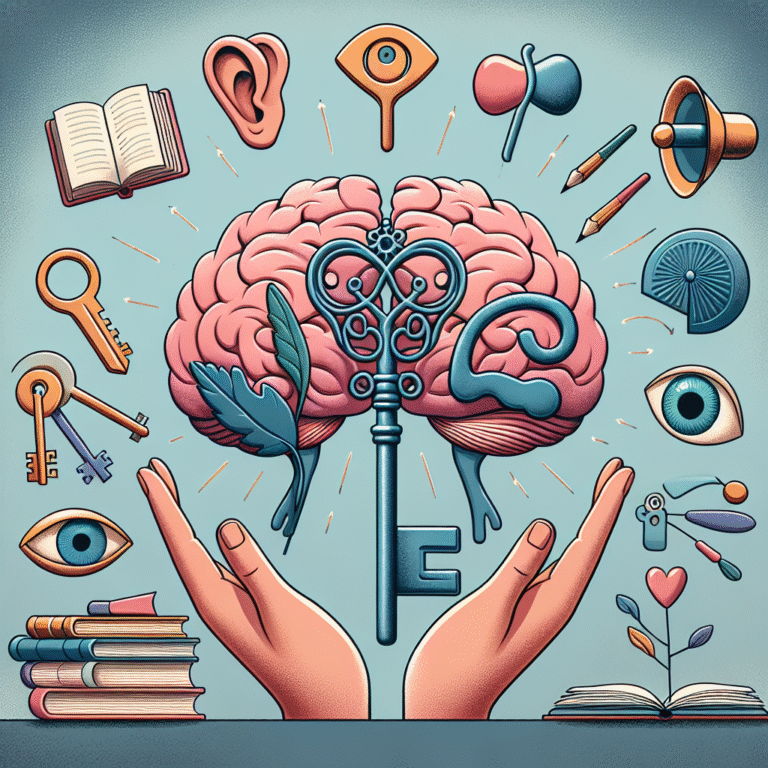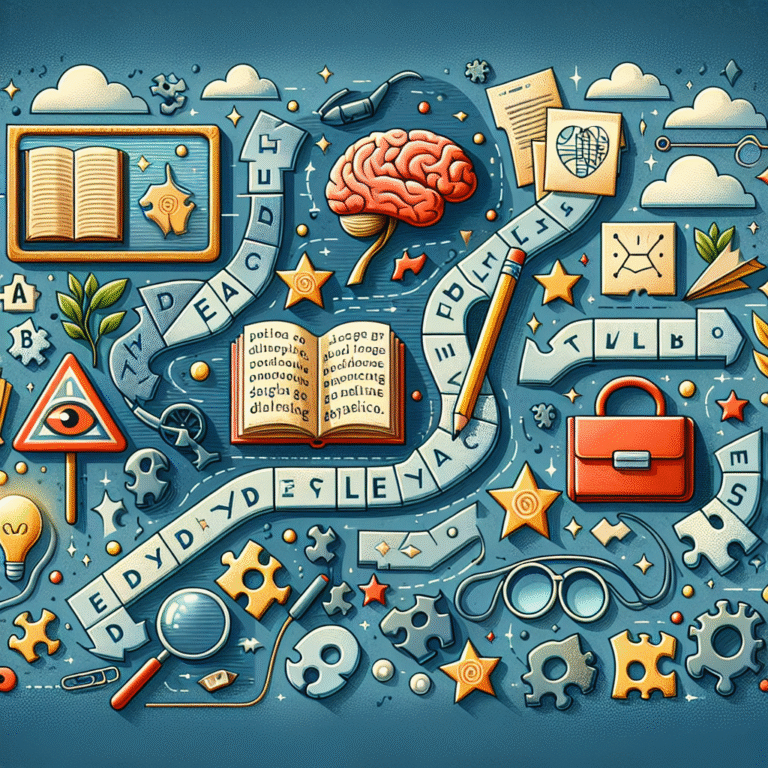
Beyond The Classroom: Biological and Environmental Factors Behind Learning Disabilities
Introduction
When we think of learning disabilities, the conversation often gravitates toward educational strategies, teaching methods, and classroom accommodations. However, a more profound exploration reveals that learning disabilities stem from a complex interplay of biological and environmental factors. Understanding this complexity is not only critical for educators and parents but also for policymakers and mental health professionals. With insightful research and real-world implications, the journey "Beyond The Classroom: Biological and Environmental Factors Behind Learning Disabilities" unveils essential truths about the origins of these challenges and offers hope for overcoming them.
The Biological Foundations of Learning Disabilities
Learning disabilities often have deep-rooted biological origins. Factors such as genetics, neurobiology, and health conditions all play pivotal roles in how children process information.
Genetics and Heredity
Research indicates that learning disabilities often run in families, suggesting a genetic link. In a study published in the American Journal of Psychiatry, families with a history of reading disabilities were shown to have higher rates of the same among their children.
Analysis: Understanding the genetic component can empower parents and educators to identify at-risk children early and provide tailored interventions.
Neurobiological Factors
Differences in brain structure and function can significantly influence learning. Children with dyslexia, for example, often exhibit distinct patterns of activation in areas of the brain responsible for language processing. An article in Nature outlines how functional MRI scans reveal reduced activation in the left temporoparietal region among dyslexic individuals, impacting their reading capabilities.
Chart 1: Brain Activity in Children with Dyslexia
| Area of Brain | Typical Activation | Dyslexic Activation |
|---|---|---|
| Left Temporoparietal | High | Reduced |
| Broca’s Area | High | Moderate |
| Occipital Lobe | Moderate | High |
Analysis: This neurobiological perspective underscores the importance of fostering an inclusive educational environment that recognizes and accommodates diverse learning styles.
Health Conditions
Chronic health issues, nutritional deficiencies, and exposure to toxins can significantly affect a child’s ability to learn. For instance, lead exposure has shown a strong correlation with learning delays. A meta-analysis found that children exposed to lead have lower IQ scores and exhibit more behavioral problems compared to those unexposed.
Case Study: Urban Exposure to Lead
In a Chicago-based study, researchers observed that children living in older homes with peeling lead paint scored significantly lower on reading assessments.
Analysis: This case reaffirms the need for public health initiatives aimed at reducing environmental risks to enhance educational outcomes.
Environmental Influences on Learning Disabilities
While biological factors set the stage, environmental influences complete the picture. A child’s surroundings, socio-economic status, and even parenting styles can mold their learning experiences.
Socio-Economic Status (SES)
Research consistently shows that socio-economic factors are closely linked to educational success. A comprehensive study from the Journal of Educational Psychology reveals that children from lower SES backgrounds often encounter multiple barriers, including less access to quality educational resources.
Table 1: Impact of SES on Learning Disabilities
| Socio-Economic Factor | Effect on Learning |
|---|---|
| Income Level | Lower educational resources |
| Parental Education | Limited support for home learning |
| Neighborhood Safety | Increased anxiety, reduced focus |
Analysis: With these insights, educational policymakers can better allocate resources to enable equitable educational opportunities.
Parenting Styles and Early Childhood Experiences
The role of parenting cannot be overstated. A nurturing and stimulating home environment positively correlates with cognitive development. Conversely, neglect or negative parenting styles can lead to heightened stress and hindered learning.
Case Study: The Impact of Parenting on Cognitive Development
A long-term study of children from birth to age five revealed that those from responsive and engaging homes performed better on cognitive assessments than peers from neglectful backgrounds.
Analysis: This emphasizes the necessity of providing resources for parents to foster better childhood experiences, potentially altering a child’s learning trajectory.
Exposure to Adverse Experiences
Adverse Childhood Experiences (ACEs)—including abuse, neglect, and household dysfunction—are increasingly recognized as significant predictors of developmental challenges, including learning disabilities. A study published in Pediatrics links high ACE scores with impairments in learning and emotional regulation.
Chart 2: Correlation Between ACEs and Learning Disabilities
| ACE Score | Risk of Learning Disability (%) |
|---|---|
| 0 | 10% |
| 1 | 20% |
| 2 | 30% |
| 3+ | 50%+ |
Analysis: Understanding the cumulative impact of stressors can facilitate early intervention strategies aimed at mitigating long-term effects.
Integrating Support Systems: Bridging the Gap
To address learning disabilities effectively, we must recognize the necessity of a multi-faceted approach that encompasses both biological and environmental factors.
Collaboration Between Schools and Health Professionals
Educators should collaborate with healthcare providers to create a unified approach to support students with learning disabilities. Regular screenings for developmental delays and mental health support can identify issues early, ensuring timely intervention.
Case Study: Successful School-Health Collaborations
A Massachusetts program that links school counselors with mental health professionals has dramatically improved student outcomes for those with identified learning challenges.
Analysis: Interdisciplinary strategies yield comprehensive support, enhancing students’ academic experiences.
Community Programs and Resources
Community organizations can also play a critical role in providing resources and educational support for families affected by learning disabilities. Programs that offer tutoring, mentorship, and workshops have shown positive results in improving children’s learning capacities.
Case Study: After-School Programs in Low-Income Areas
A San Francisco initiative providing after-school tutoring and parental engagement workshops reported a 30% improvement in literacy rates among participating children.
Analysis: These examples demonstrate that investment in community resources can yield significant long-term benefits.
Conclusion
The journey to understanding learning disabilities extends well beyond the classroom. By highlighting the biological and environmental factors in "Beyond The Classroom: Biological and Environmental Factors Behind Learning Disabilities," we unveil the complexities that contribute to these challenges.
Understanding that learning disabilities stem from a blend of genetics, brain function, socio-economic status, and environmental influences not only empowers educators and parents but can also catalyze societal change. Together, we can advocate for holistic approaches that pave the way for brighter, more equitable educational futures for every child.
FAQs Section
1. What are learning disabilities?
Learning disabilities are neurological disorders that impact the brain’s ability to process information, resulting in difficulties in reading, writing, mathematics, or other learning areas.
2. How do genetic factors influence learning disabilities?
Genetic factors can predispose individuals to specific learning challenges, with family histories often revealing higher instances of similar disabilities across generations.
3. Can environmental factors contribute to learning disabilities?
Absolutely. Factors such as socio-economic status, parenting styles, and exposure to toxins significantly influence cognitive development and learning capacities.
4. What role does nutrition play in learning disabilities?
Nutritional deficiencies can hinder brain development and contribute to learning difficulties, making a healthy diet crucial during early childhood.
5. Are there effective interventions for learning disabilities?
Yes! Early detection, tailored educational strategies, and support systems involving parents, educators, and mental health professionals can lead to successful outcomes.
6. How can parents support children with learning disabilities?
Parents can create a supportive home environment, engage with educational resources, and maintain open communication with teachers to support their child’s learning needs effectively.
This exploration of "Beyond The Classroom: Biological and Environmental Factors Behind Learning Disabilities" provides a compelling narrative that is both enlightening and actionable. By bridging gaps in understanding and collaboration, we can ensure that every child has the opportunity to thrive in their educational journey.






